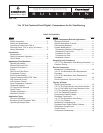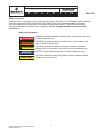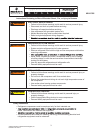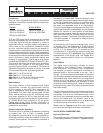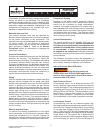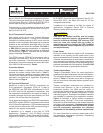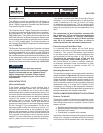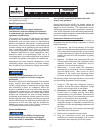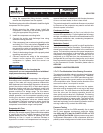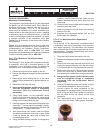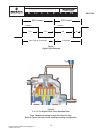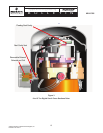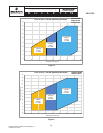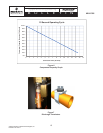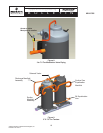
7
© 2012 Emerson Climate Technologies, Inc.
Printed in the U.S.A.
AE4-1395
Application Engineering
BULLETIN
Modulation Control
Two different controls are available from Emerson to
provide digital scroll modulation control, the Copeland
Scroll
™
Digital Compressor Controller and the Emerson
Commercial Comfort Controller.
The Copeland Scroll
™
Digital Compressor Controller is
an open loop controller that provides control, protection,
and diagnostics for the digital scroll and is suited for
OEM applications. The system controller supplied by the
OEM calculates the required compressor capacity and
communicates that capacity to the digital scroll controller
via a 1-5 VDC analog signal. For more information on
the Copeland Scroll Digital Compressor Controller please
refer to AE8-1328.
The Emerson Commercial Comfort Controller is a closed
loop controller that provides modulation control based
on space temperature and is suited for both OEM and
retrotapplications.Thiscontrolleristypicallylocatedin
the conditioned space and controls the modulation cycle
of the compressor without the need for an additional
system controller. For more information on the Emerson
Commercial Comfort Controller, please refer to AE8-1393.
NOTICE
For OEMs that choose their own controls
package, the controls must include the protection
features incorporated into the Copeland Scroll
™
Digital Compressor Controller. Please consult
with Application Engineering for a list of these
requirements.
APPLICATION TESTS
Oil Level Verication
If the system conguration is more complex than a
single circuit packaged system with one compressor,
evaporator, and condenser, an oil return test is highly
recommended during system development testing. For
this test a sample compressor with a sight-tube should
be used to observe the oil level over the entire operating
range of the system at the expected compressor
modulation rates, to ensure an adequate oil level in
the compressor at all times. The oil level should not
go below the weld points of the lower bearing bracket
for the 3 through 7.5 ton compressors. For the 8 ton
and larger digital scrolls the minimum oil level is 1.5"
(40 mm) below the center of the standard oil sight-
glass on the compressor. If the oil level falls below the
prescribed level for more than a few minutes either more
oil is required in the system or an oil recovery cycle is
needed. For more information on what an oil recovery
cycle is, please consult with Application Engineering.
If the system contains more than 20 pounds (9 kg) of
refrigerant,itisourrecommendationtoaddoneuid
ounce of additional oil for every 5 pounds (15 ml/kg)
of refrigerant over this amount. This is a starting point
and oil should be added as determined through system
testing or as required by the end use application in the
eld.
The compressor oil level should be checked with
the compressor "off" to avoid the sump turbulence
when the compressor is running. Manifolded
compressors should have their oil levels checked
after 20 to 30 seconds of off time, to allow oil
balancing between the manifolded compressors.
Excessive Liquid Flood Back Tests
It is expected that the design will not ood during
operation at all of the varying loaded and modulation
conditions. This places demanding requirements
on theow control deviceto control refrigerantow
and superheat all the way down to 10% of full load.
Throughout the operating range of the unit, the
suction superheat must remain positive. If the
ow control deviceis unable to maintain superheat,
an electronic expansion valve, accumulator, or other
means must be taken to maintain at least 20°F of
compressor sump superheat.
Operating Envelope Test
The operating envelopes and recommended modulation
ranges are shown in Figures 4 and 5. System testing must
be performed if operation outside of these recommended
ranges is desired. System testing should consist of unit/
system operation at abnormal operating conditions to
verify that suction superheat and compressor discharge
temperatures stay in a range that is healthy for the
compressor and tripping of the compressor overload is
avoided. Please consult with application engineering for
recommended tests and analysis of test data.
DIGITAL COMPRESSOR RETROFIT APPLICATIONS
Reasons To Retrot
Thereareanumberofreasonswhyretrottinganon-
modulatingsystemtoonethatmodulateswillbenet
the building owner and its occupants. Some of these
reasons include:
1. Reduced indoor temperature and humidity swings
2. Reduced power consumption and operating costs
3. Reduced cyclic losses
4. Qualicationforspecialutilityrebates
Applications that have excess cooling capacity and are
singlezone,constantorvariableair-owarecertainly
inthescopeofretrotopportunities.Unitsthatemploy



